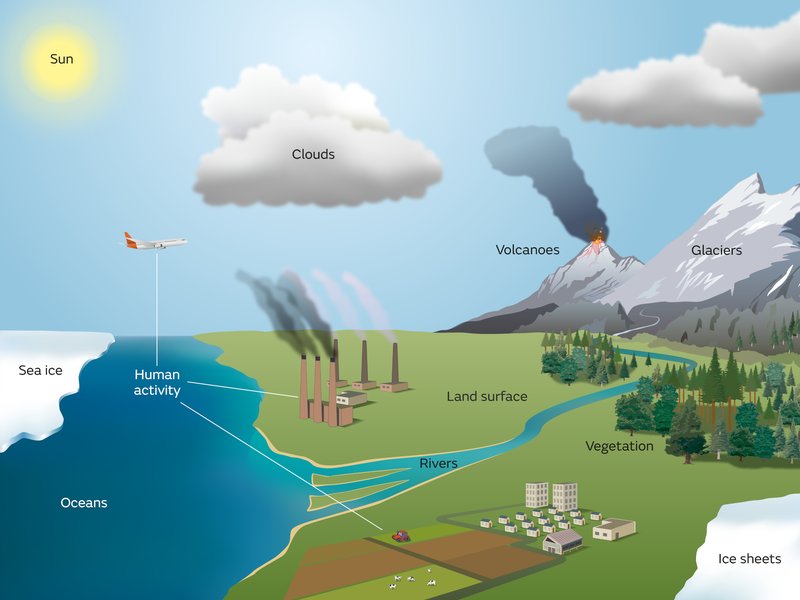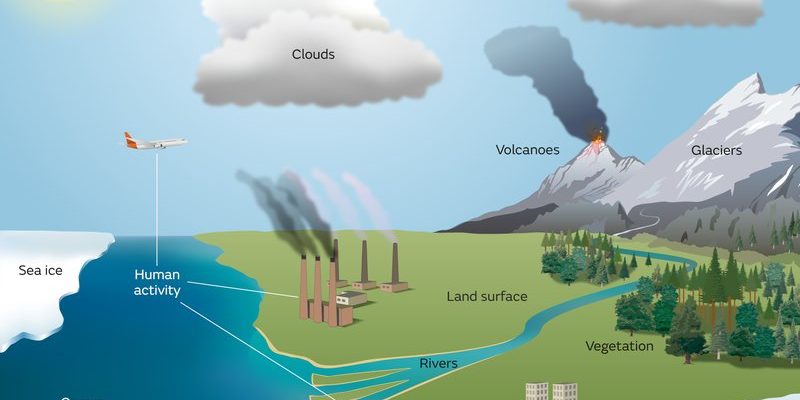
Imagine a cozy, warm bubble of water where manatees drift lazily, munching on seagrass. That’s their ideal world. But rising sea temperatures and shifting ecosystems are like a disruptive guest crashing their peaceful home. With climate change, these gentle swimmers face threats that could turn their tranquil lives upside down. Here’s the thing: understanding how climate change affects manatees not only sheds light on their struggles but also reminds us how interconnected all life is on Earth.
The Basics of Manatees and Their Habitat
Manatees are fascinating creatures that call the shallow waters of rivers, bays, and coastal areas home. They thrive in warm waters, primarily found in Florida but also across the Caribbean and parts of South America. With their paddle-like flippers and round bodies, they’re perfectly designed for a life of grazing on aquatic plants.
You might be wondering how climate change plays into this. The answer lies in their environment. Manatees are dependent on specific water temperatures and the availability of seagrasses, which are their main food source. When the climate shifts, those delicate ecosystems start to change, impacting the manatees’ food supply and habitat.
Rising Water Temperatures
One of the most evident effects of climate change is rising water temperatures. As global temperatures increase, the waters manatees inhabit are getting warmer—sometimes too warm. This change can lead to a variety of problems for these mammals. For instance, when water temperatures rise, it can harm the seagrass beds they rely on for food.
Warmer waters can stunt seagrass growth or even lead to die-offs. When seagrasses decline, manatees face a food shortage, forcing them to travel further for sustenance. Just picture spending hours searching for the food you enjoy, only to find less and less of it available. It can be frustrating and exhausting!
Habitat Loss
As coastal waters warm, another threat looms: habitat loss. Rising sea levels due to melting ice caps and thermal expansion of water lead to the flooding of crucial coastal areas. This not only reduces the available seagrass beds but also alters the salinity of the water. Manatees prefer certain salinity levels, and too much change can make these areas less hospitable for them.
Moreover, urban development and pollution often accompany rising sea levels. More boats and construction can cause boat strikes, a primary threat to manatees. Many of these adorable creatures have been struck and injured or killed by speeding boats, which is tragic. Reducing available habitats while increasing risks adds further stress to their populations.
Increased Storm Intensity
Let’s talk about storms, shall we? Climate change is leading to more intense and frequent storms, like hurricanes. Stronger storms can disturb manatee habitats by uprooting seagrasses and altering water conditions. The aftermath of these storms can also lead to pollution events, where runoff from land floods into the water, introducing chemicals that harm marine life.
Here’s a little story for you: imagine a manatee resting peacefully, only for a hurricane to rip through its home, destroying the seagrass it needs to survive. After the storm passes, the water is murky, filled with debris, and the once-thriving underwater garden is reduced to a barren wasteland. Without adequate food and a suitable habitat, manatees struggle to thrive.
Impact on Breeding and Behavior
The effects of climate change extend beyond just habitat and food; they influence the breeding and behavior of manatees too. Studies suggest that population dynamics could shift as manatees are forced to adapt to changing environments. For instance, if seagrass beds are diminished, females may fail to have enough energy to reproduce successfully.
Additionally, rising temperatures can affect the timing of reproduction. Manatees usually breed in warmer months, but as water temperatures fluctuate, it may disrupt their breeding cycles. Imagine trying to plan your vacation only to find the weather has changed—frustrating, right? Well, for manatees, their whole life cycle depends on these environmental cues, and climate change throws a wrench into the works.
Conservation Efforts and Moving Forward
Despite these challenges, there’s hope for manatees. Various organizations are working tirelessly to protect these gentle giants and their habitats. From protecting seagrass beds to enforcing safe boating practices, conservation efforts are in full swing. Here’s where you can play a part as well!
By raising awareness about climate change and supporting local conservation groups, every bit helps. Even small actions, like reducing plastic usage or supporting sustainable tourism, can contribute to a healthier ecosystem for manatees.
Also, educational programs that highlight the importance of these sea cows can foster greater community support for their conservation. When people learn about the challenges manatees face, it sparks compassion and a desire to help.
Climate change is dramatically impacting manatees and their environments. Rising temperatures, habitat loss, increased storm intensity, and altered breeding patterns are just a few of the challenges they encounter. These gentle creatures remind us of the delicate balance within our ecosystems and how vital it is to protect them.
Honestly, every action counts. By being mindful of our impact and supporting conservation efforts, we can help ensure that manatees continue to grace our waters for generations to come. They’re not just a part of our coastal ecosystems; they’re a symbol of the delicate interdependence of life. So let’s work together to keep their home safe and secure—because a healthy planet means happy manatees.

